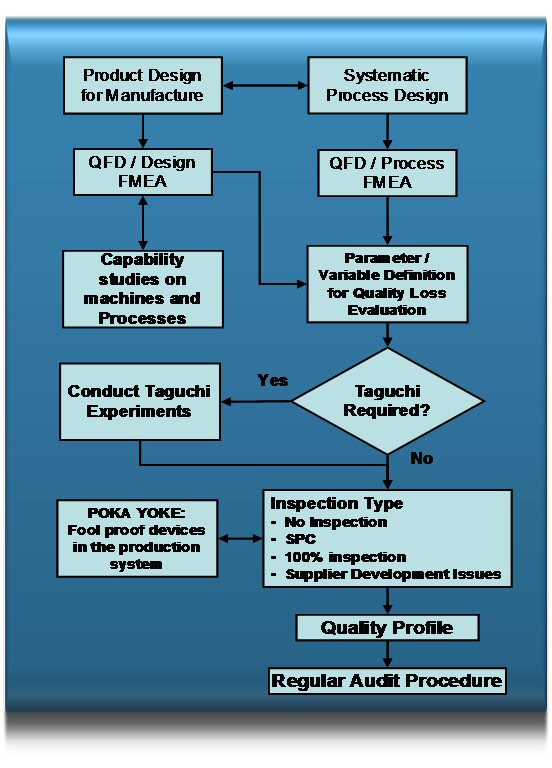4.13 - A Systematic Approach to Quality
Overview
There are a number of valuable key techniques that can be used to improve the quality of both products and processes.
Design Failure Modes and Effects Analysis (FMEA)
Design FMEA is a formalised analytical technique which lists all potential sources of failure and then allocates a weighted point score according to the severity of the consequences of failure. It is used to ensure that all design failure modes have been considered and accessed with a view to elimination. A hierarchical approach starts first at the level of subsystem or product model and then descends if necessary to detailed component and part level, so minimising work loads while maintaining an overview.
Process Failure Modes and Effects Analysis (FMEA)
Process FMEA is a formalised analytical technique used to ensure that all manufacturing failure modes have been considered and assessed with a view to their elimination. It can also be applied to office processes.
Quality Function Deployment (QFD)
QFD is an approach to product and, or, process design that employees a collection of tools (I/O, cause and effect, etc) to highlight where engineering effort should be expended and, just as importantly, where NOT to invest time and money. (See 6.07 & 6.08)
Capability studies
This is the study of processes to ascertain whether they are capable of the production of parts to the tolerances required by the product design. Statistical reliability formulae are used.
The use of capability studies can act as a filter to discover what problems require the use of Taguchi for their resolution. Taguchi methods require substantial experimental effort and should therefore only be used for those problems that cannot be solved in any other way. (See 4.15)
Taguchi
Taguchi is a methodology for the design of experiments that reduces the number of experiments necessary to discover effects and interactions when a number of parameter variations affect an outcome.
Poka Yoke
Poka Yoke are physical “foolproof devices” built into the production process which constitute an effective source inspection method ensuring that defective parts are NOT produced and passed to the next operation as a result of machine or operator error. Their use minimises the quantity of finished product testing required. (See 5.31)
Statistical Process Control (SPC)
SPC is a process monitoring technique that gives confidence that critical part and component dimensions are within tolerance without having to measure every item. It gives a warning when the process is going out of control so that the production of the defective products can be prevented. It is a form of feed-forward control that from a running graph of measurements (a Run Chart), predicts when a process will run out of control. It controls the process not the product.
In order to gain the maximum benefit from these techniques, they should be used in a systematic and structured way and in the correct sequence.
The diagram illustrates how they may be used in sequence. Note that is necessary for organisational procedures, responsibilities, and authorities to be defined to ensure the techniques are properly applied and that staff are properly employed.
Communication based on people talking directly to each other, not complex paperwork systems or computer systems
Multi-skilled flexible teams each with properly designed performance measures to suit the business process they control
A Systematic Approach to Product and Process Quality
